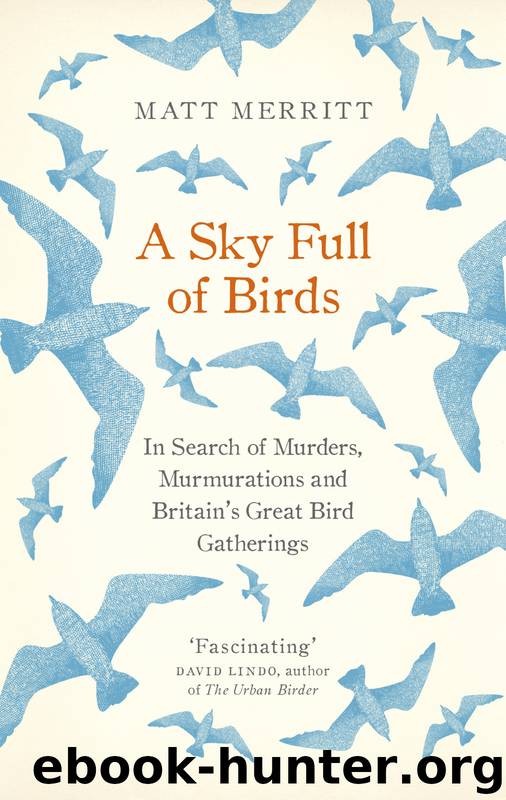A Sky Full of Birds by Matt Merritt

Author:Matt Merritt
Language: eng
Format: epub
ISBN: 9781473503328
Publisher: Ebury Publishing
Nor did a lot of other birders. Peregrines carried on quietly but steadily building up their numbers in their strongholds, until they reached the point at which the young birds had to start roaming further and further afield in search of new territories. The bird’s very name, meaning ‘wanderer’, is a clue to its peripatetic tendencies, and pairs prefer to maintain large territories. For that reason it wasn’t long before they started looking at distinctly untypical breeding sites.
Red kites, on the other hand, were given a helping hand by the authorities, the Welsh population having become so small that extinction in the UK was very much on the cards, and with the bird being threatened more generally across its worldwide range. The RSPB had been involved in trying to protect it since 1905, and although they succeeded in reducing illegal poisoning and egg collecting, numbers increased only very slowly, so there was little chance of the bird spreading beyond its Welsh heartland any time soon. That led to the decision, in 1986, to start a reintroduction programme, initially on the Black Isle, near Inverness, and in the Buckinghamshire Chilterns, followed by further releases in Rockingham Forest, Northamptonshire; central Scotland; Dumfries and Galloway; around Harewood House, Leeds; and in the Derwent Valley, near Gateshead. There have been setbacks, for sure, with persecution proving a problem in Scotland, but for the most part the scheme has been a spectacular success, with the releases in intensively farmed southern and central England proving to be the most successful of all.
In most respects, this reflects what was hoped might happen. In many parts of the world, the bird’s close relative, the black kite, is a fixture of man-made landscapes, including city centres, where they act as flying waste disposal units that feed on carrion, food waste, and the general detritus of human day-to-day life – not for nothing were they known, in British India, as ‘shite-hawks’.
Literature suggests that the red kite filled much the same niche in Britain in the not too distant past. Shakespeare makes more than one reference to the species, using its name as an insult in King Lear (presumably because of the negative associations of its carrion-eating), and making reference in The Winter’s Tale to the bird’s curious habit of collecting unusual items, including clothing, for its nest. Both strongly suggest that it was a familiar sight for the mainly urban audience the Bard was writing for.
So, while generations of Britons, including my own, had grown up thinking of the red kite as a bird of one of the wildest, emptiest parts of Britain, in fact, all things being equal, it prefers a gentler, rather less bleak landscape. If that means living cheek by jowl with mankind, then so be it.
Download
This site does not store any files on its server. We only index and link to content provided by other sites. Please contact the content providers to delete copyright contents if any and email us, we'll remove relevant links or contents immediately.
The Lonely City by Olivia Laing(4571)
Animal Frequency by Melissa Alvarez(4156)
All Creatures Great and Small by James Herriot(3988)
Walking by Henry David Thoreau(3685)
Exit West by Mohsin Hamid(3636)
Origin Story: A Big History of Everything by David Christian(3473)
COSMOS by Carl Sagan(3352)
How to Read Water: Clues and Patterns from Puddles to the Sea (Natural Navigation) by Tristan Gooley(3241)
Hedgerow by John Wright(3109)
How to Do Nothing by Jenny Odell(3103)
The Inner Life of Animals by Peter Wohlleben(3100)
How to Read Nature by Tristan Gooley(3080)
Project Animal Farm: An Accidental Journey into the Secret World of Farming and the Truth About Our Food by Sonia Faruqi(3019)
Origin Story by David Christian(2994)
Water by Ian Miller(2955)
A Forest Journey by John Perlin(2918)
The Plant Messiah by Carlos Magdalena(2750)
A Wilder Time by William E. Glassley(2690)
Forests: A Very Short Introduction by Jaboury Ghazoul(2671)
